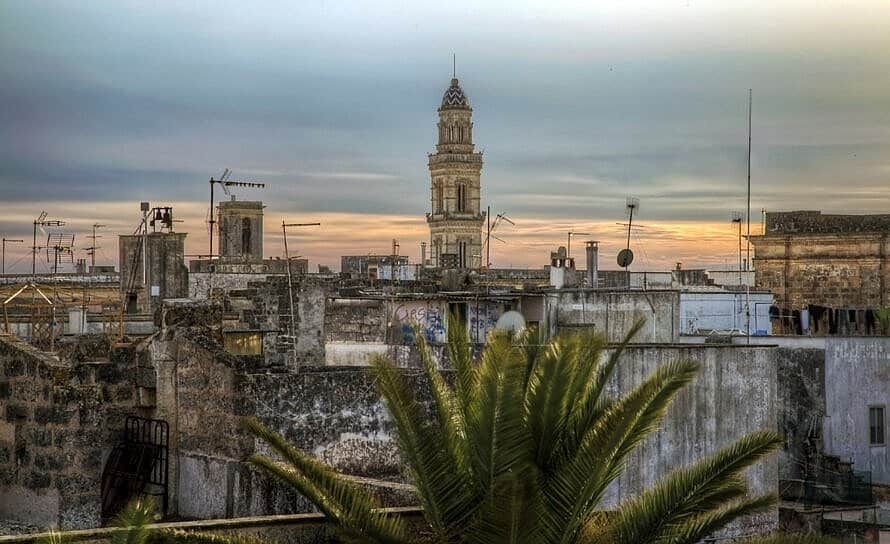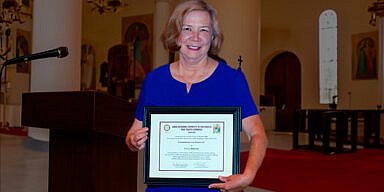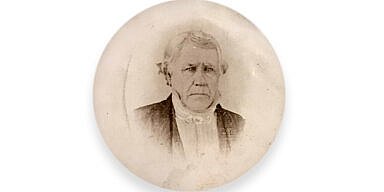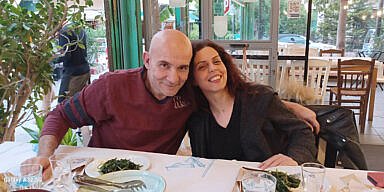My newfound friends waved to me from the deck as the ferryboat began its journey into the night. I had just left a week in the heart of the Heel of Italy, a place called Grecia Salentina, an oasis of the Greek language and culture in Italy. We had spent part of the day in the Blue Star Ferries ticket office in Brindisi, in an era, at the turn of the millennium where the internet was still modem-based and had limited reach, either in terms of commerce or mobility.
After the rather long task of getting a ticket, I settled in for a lunch in a hole-in-the-wall joint on cobbled steps in an older part of the city. It was late summer in Italy’s “Deep South,” not a thing moved sprightly, and the vast majority of the people were swarthy adherents of three ethnicities—Italians, Greeks, and Albanians. All three had been major parts of each other’s cultural and demographic journey through history, and this mélange was part of the story of history.
Suddenly two sprightly American missionaries of Scandinavian descent, Mormons, perhaps from my Utah birthplace, walked down the steps with rock lobster sunburns, white shirts (with short sleeves as a nod to climate), ties, and nameplates in Italian. It was as if the Normans, who ousted Byzantine control from the area in the eleventh century, invaded again.
Apulia and Apulians readily resemble Greece, and it is hardly a surprise, given geography and that in the heart of Salento, Italy’s Heel, there are a collection of villages “La Grecia Salentina,” which still speak Greek. Climate compliments the obvious cultural and DNA link, yet this part of Italy, despite culinary, genetic, and climate commonality, still is very different to Greece. The baroque architecture ubiquitous in the older structures here is largely absent in Greece, absent some heavily Venetian-influenced towns such as Nauplion or Hania.
It was already late when the ferry left Brindisi, as loading cars takes time. Many large commercial trucks were plying this route to Greece, as the roads in former Yugoslavia were less used at that time due to ongoing problems with the breakup of Yugoslavia. The bar was functional, if a bit worn and grimy, with plenty of tourists, particularly German families, probably with small camper vans looking to do the “tomato tourist” trek to Greece and truckers.
I spent much of the evening/morning drinking beers and eating sandwiches with Greek truckers, a gruff lot with, as always among Greeks, its share of philosophers. While some of the subject matter is best to leave out of print, talk of bills of lading, lines at borders, and transport bottlenecks is the stuff of today’s supply chain-challenged era.
As the writer and historian trapped in a banker’s body, I was pleased to see how many of them readily understood that they were plying one of Europe’s oldest trade routes, the crossing of the Ionian Sea between Greece and Italy. The marriage of Greece and Rome was not only the parentage of Byzantium, but in a real sense of the whole of Europe, struggling to unite, and it was not lost on my thinking-drinking buddies.
I retreated to the cabin with four bunks, just hours before arrival in Patras, though three chain smokers occupied the room, and it was hard to breathe, much less to sleep. Besides, I wanted to see Greece’s coast in all of her splendor on the port side of the ship, as the barque, as in millennia past, skirted the Ionian Islands down to the chief port of western Greece.
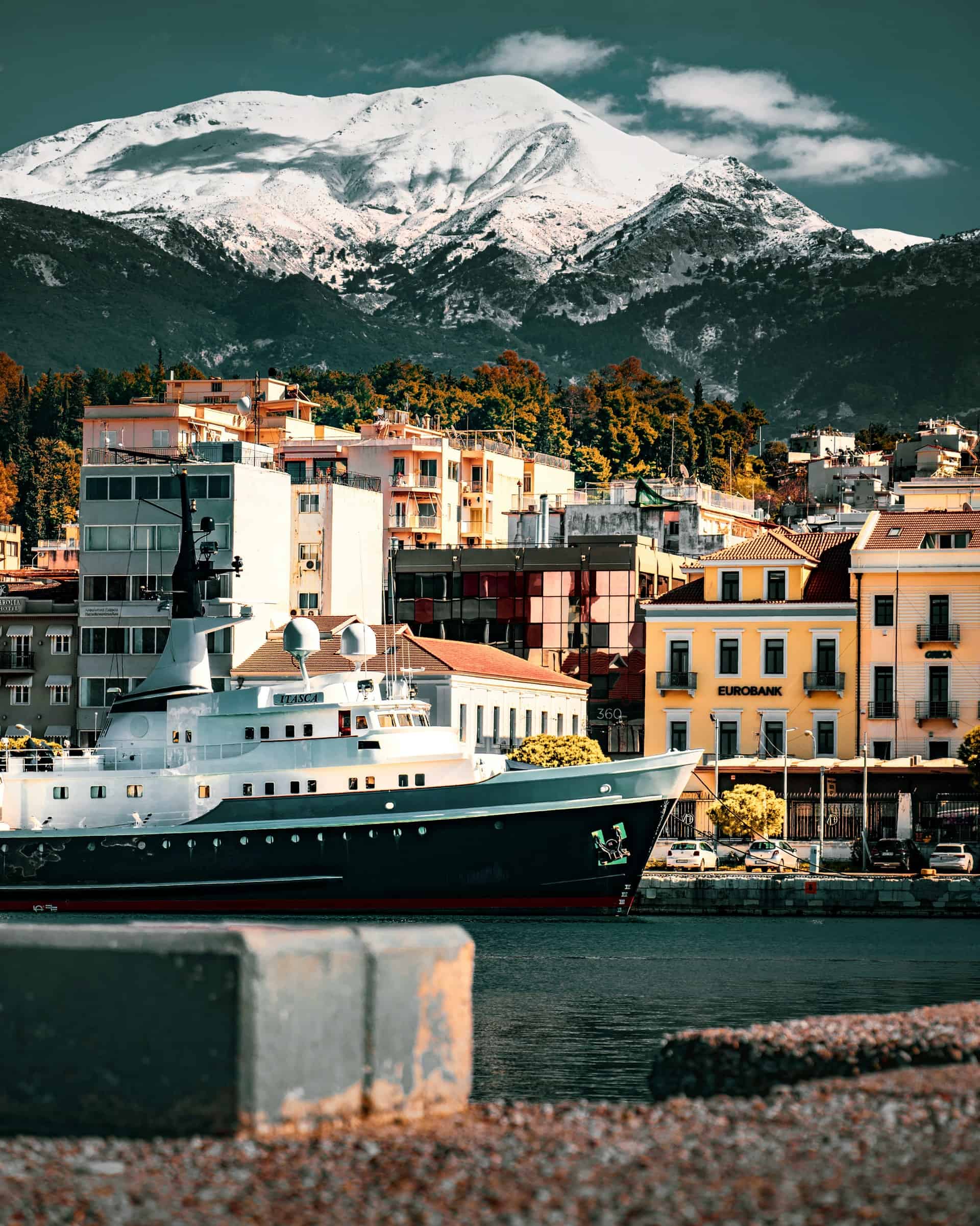
Patras, Greece. Photo by Anastasios Tselepatiotis on Unsplash.
In the humid morning air of Western Greece, Patras resembled a grainy color newsreel from the Second World War, a town past its prime when it was one of Greece’s key export hubs and the exit port of so many emigrants to the New World, including my maternal grandparents. Somewhere, in the mountain fastness above the town, Vasilis Souvaliotis, along with several brothers and kinsmen, made their way to Utah in the first decade of the twentieth century. He returned when his country called in the Balkan Wars but made his way back to Utah with a bride, and several hundred people are now their proud descendants.
We reached the quay, and it was the year 2000, so there was no passport control on the decaying concrete dock. It was prior to the smartphone and the ubiquitous digital camera, so I recreated from memories. Still, the port had seen better days, and I opted for a sandwich in the area of Agios Andreas church, Patras’ landmark temple, and, I believe, the largest church in Greece, for refreshment.
Here were my people, and most specifically my people, as so many people reminded me of myself or relatives in Utah, perhaps, of course, because they were distant relatives. And very much did they resemble their “cousins” across the Ionian Sea, yet the differences, perhaps unnoticeable to an outsider, were all too readily apparent. Patras architecture reflected the 1960s concrete Greek multi-floor balcony architecture seen everywhere, and the older structures were often in bad shape. They utterly lacked any of the civic and artistic grace of the baroque buildings of Southern Italy. Of course, the older Classical, Crusader, and Byzantine architecture was much in evidence, built to last and kept by the Ottomans as part of the necessary defenses of the town. Further, in spite of the similar culture and economics of Southern Italy, the sense of civic maintenance was clearly higher on the Italian side of the sea.

Patras, Greece. Photo by Miltiadis Fragkidis on Unsplash.
As I left the square towards the train station, where I boarded the slow train rather than take the advice of the ticket dispenser, who judged my disheveled but well-dressed appearance as preferring a nicer ride, I looked at my surroundings. The Ottoman Curtain, which fell on the East side of the Adriatic/Ionian Seas, was a real cultural divide reflected in public spaces and mentalities.
The beauty of slow travel, of boats, trains, and feet, is that the subtleties and similarities of places both near and far are in full view. A backpack and good shoes will get you an education, and the slow boat to Greece is something worth doing if you have the time. I am glad I did it when I was younger, and things were slower, and when, despite the lack of connectivity, we were all connected.
